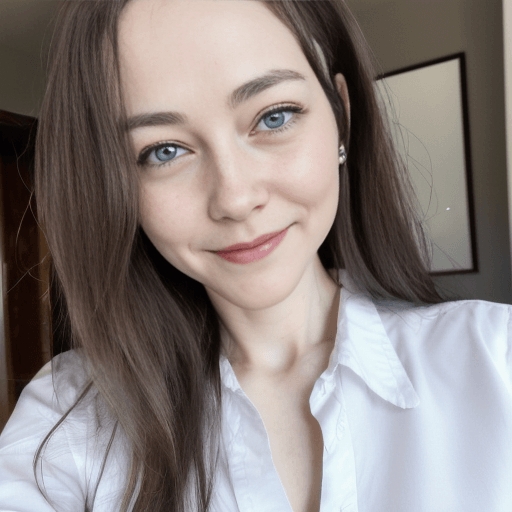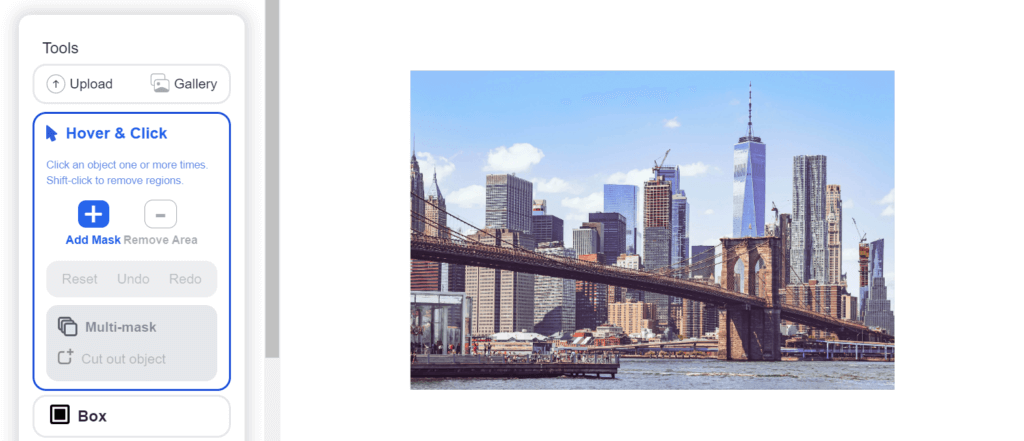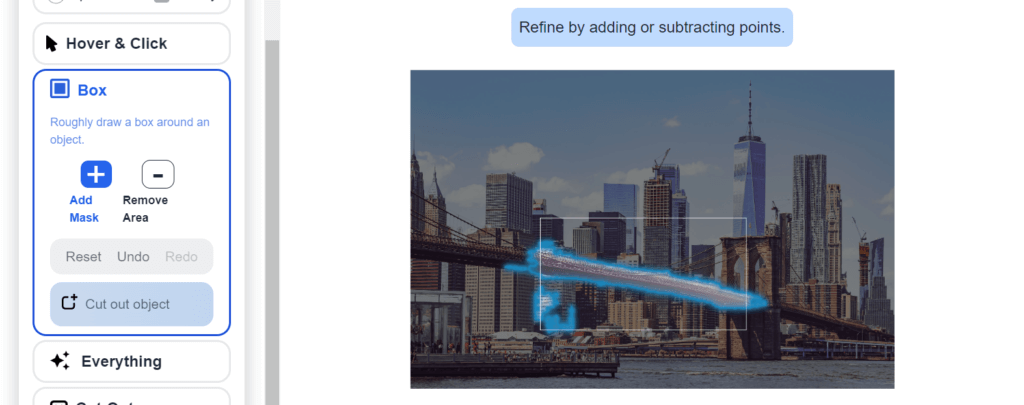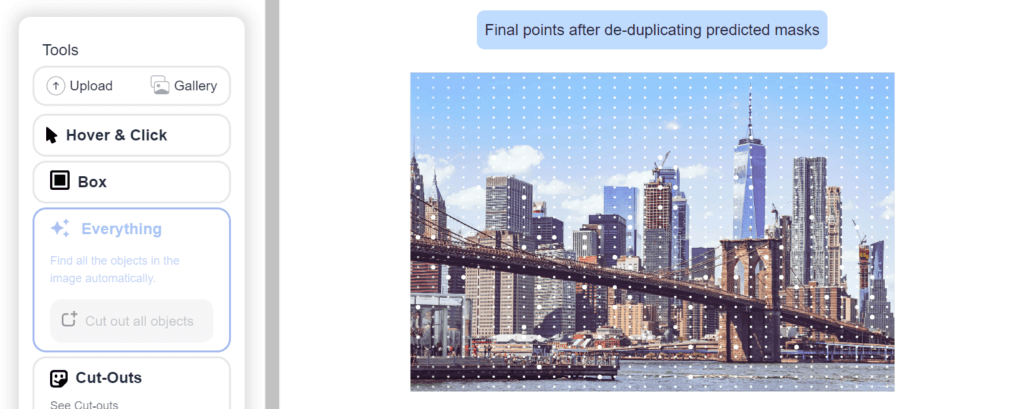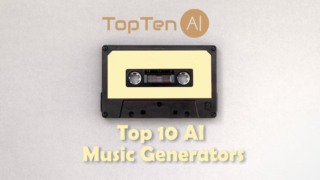In April 2024, Meta AI released a new robust image segmentation model "Segment Anything Model (SAM)" (More information in the bellowing post). Image segmentation is a core function in computer vision that makes the images easy to analyze or process. However, Meta says that developing an accurate segmentation model is not an easy task. It requires the complete assistance of technical experts with access to AI training infrastructure and huge volumes of precisely annotated in-domain data.
Today we're releasing the Segment Anything Model (SAM) — a step toward the first foundation model for image segmentation.
SAM is capable of one-click segmentation of any object from any photo or video + zero-shot transfer to other segmentation tasks ➡️ https://t.co/qYUoePrWVi pic.twitter.com/zX4Rxb5Yfo
— Meta AI (@MetaAI) April 5, 2024
With the development of SAM, artificial intelligence researchers hope to "democratize" segmentation by reducing the need for large datasets, models, and technical training. In this article, we will discuss everything about the Segment Anything Model.
Overview of Segment Anything Model
Segment Anything Model is a segment AI model which can segment all objects both in images and videos. According to Meta News, it doesn't require any prior experience for segmentation because of its effective zero-shot performance on multiple segmentation tasks. Here are some features of this new image cutter model.
Key Features of SAM
- It can quickly isolate "Everything" in the image
- A powerful and critical technology for image segmentation in the real world
- Segment Anything Model can automatically detect and mask objects
- Instantly create competing valid mask for any prompt
- It enables real-time interaction with AI by selecting individual points
- It requires one click to include or exclude any object from the segmentation
How SAM Works for Image Segmentation and Object Recognition?
The Segment Anything Model is purposefully designed to provide an exact segmentation mask in response to various input prompts, such as rough boxes or background points. This innovative AI model can determine which pixels in an image represent a specific object and instantly detect objects to handle complex scenes.
This new Image AI model can generate different valid masks to handle uncertainty challenges and segment multiple objects at a time. SAM can detect and segment faces, hair, hands even everything in the image without any additional training.

Exciting to know what technology behind the segment anything?
Technology Behind Segment Anything Model
Segment Anything Model is a deep learning art that uses different technologies including an image encoder, lightweight mask decoder, and prompt encoder. These components work simultaneously to detect and segment particular objects in the image.
The image encoder uses artificial intelligence and CNN technology to encode the input image and capture useful information for segmentation. Next prompt encoder encodes the user's input such as points, texts, masks, or boxes, and instructs the segmentation process. In the end, the lightweight mask decoder creates a feature map based on the input information and embeddings prompt. See the figure.
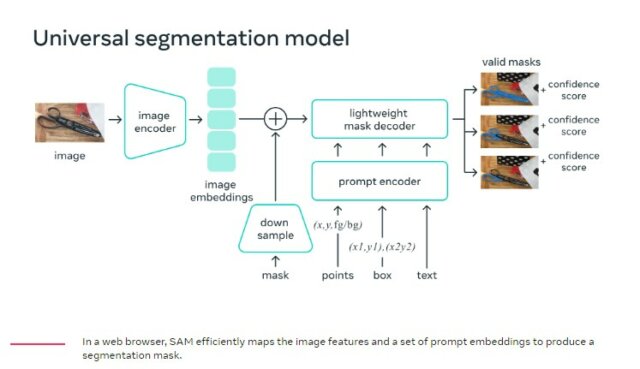
How to use Segment Anything Model?
Although SAM has not been officially applied to various tools yet, you can already try to use the DEMO version of this model on MetaAI's official website. After we try and use it, we will summarize the steps of using it for you. If you are interested, you can also try it out.
Step 1: Go to the official website of SAM

Step 2: Scroll down and click Go to demo

Step 3: Select or upload the image
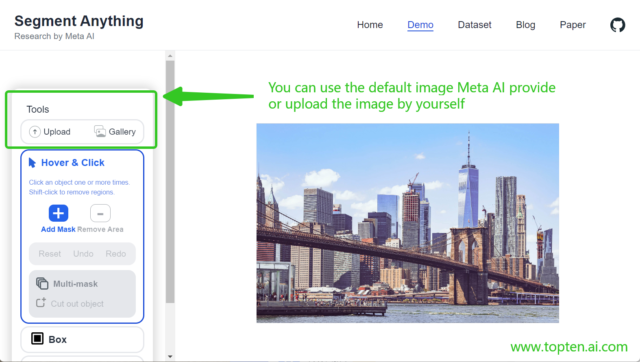
Step 4: Choose the way how you cut out the image. You can choose Hover&Click, Box, and Everything (Click the following picture to zoom in).
Step 5: Click Cut out Object

Step 6: go to Cut-Outs to see the result

Practical Applications of Segment Anything Model
SAM has a wide range of applications in many fields, especially in computer vision. Meta AI researchers trained the largest segmentation dataset including 11 million licensed images and over 1.1 billion valid masks on privacy-protecting images.
The segment AI has an extensive nature of the dataset so it can analyze new kinds of objects and images. For example, practically it could be used as a module of larger AI systems to comprehend the world. Similarly, as a model, SAM can identify both the textual and visual content of a webpage.
In computer vision, image segmentation is used to cut objects of an image into portions that correspond to semantic categories. It has many other vision-based and prompt-based approaches to create high-quality and efficient segmentation results. Other practical applications include object detection, mask creation, scene understanding, complex visual analysis, image editing, and video analysis. See the image segmentation in the image below.

Meta AI's Role in Advancing AI Research
Meta AI is a research team, that has played a crucial role in advancing the field of artificial intelligence. The team focuses on the development of cutting-edge models, datasets, feature engineering, and algorithms that enable computers to interpret input information, similar to humans. One of the most significant impacts of Meta AI on AI research is image segmentation, particularly in the field of computer vision.

The meta-research team at Meta AI works on multiple projects, including image recognition, model selection, image synthesis, and natural language processing and the most recent is Segment Anything Model (SAM).
Meta AI says that the segment AI Dataset is an open-source model for research purposes. Users can freely access it on GitHub. Overall, Meta's impacts on the field of AI research are continuously growing as more researchers incorporate its algorithms and AI technologies into their work.
Future Prospects and Challenges

The Segment Anything Model is still in its early days. According to Meta News, in the future, AR glasses can use SAM to detect ordinary objects. AR glasses may provide supportive reminders and useful instructions to memorize commonplace objects.
The Segment Anything Model has the potential to empower future developments in image segmentation with AI. It can also boost future applications in other fields that require object segmentation of a given image.
SAM can also affect many other fields, such as medical research and agriculture, and biology. One day, it might be possible that there would be more advanced farmers, medical researchers, and scientists.
However, the development of new algorithms and advanced AI models has also raised ethical concerns and challenges about their implications and safety.
Conclusion
As the Segment Anything Model is trained on a variety of images and objects, it can work in almost all industries and fields that image segmentation. SAM can play a vital role in the AI landscape because it has great potential to handle complex scenes with shadows, reflections, occlusions, plants, and much more. SAM is a robust state-of-art for landscape architecture.
Advancements in image segmentation and AI have already made significant progress in computer vision projects. Furthermore, researchers are actively exploring ways to develop controllable and safe-to-use AI models.
Read more: VanceAI Review: Best AI-Powered Photo-editing Assistant
